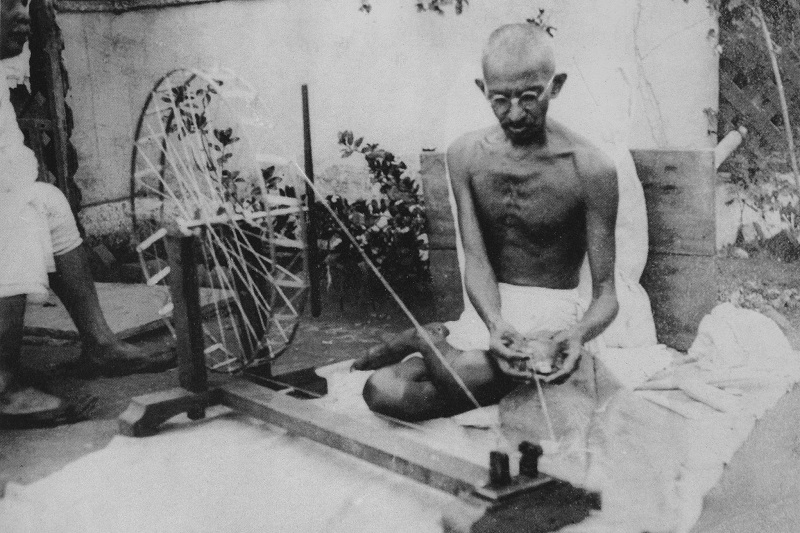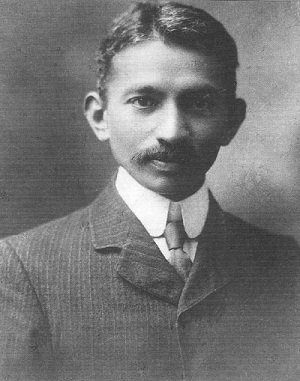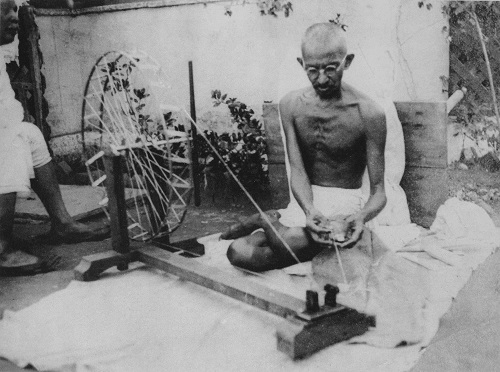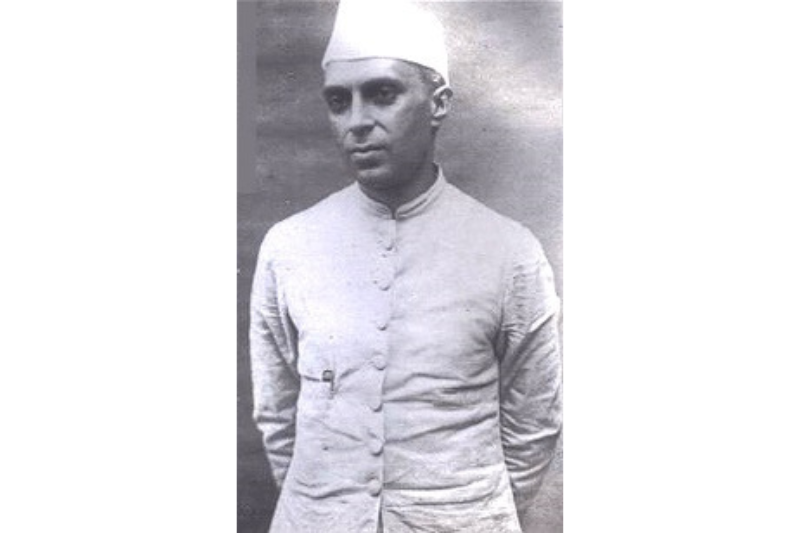University Libraries

What to Wear
By Joan Milligan
Clothing can make a statement. Think about the statement Mohandas Gandhi made in 1921 when he chose to wear a dhoti, a loincloth, instead of the British-style suits he had worn as a London-educated lawyer. Knowing it was a way to communicate visually to an international audience, he made his clothing choice with input from his inner circle.
Originally Gandhi planned to wear a dhoti for just five weeks to draw attention to the impending deadline for the British to return home rule to India. That deadline passed, as did so many others, so he continued to wear the wrapped cloth garment until the end of his life, never feeling his mission was finished. The symbolism of khadi, homespun woven cloth, was a rejection of the Western clothes imported to India by the big manufacturers in Manchester, England. By refusing dependence on foreign products, Gandhi believed, India could work toward self-sufficiency and a clearer sense of identity.
In her book Clothing Matters (1996), anthropologist Emma Taro turns to the question of “what to wear” in different Indian contexts. She describes how the question of what to wear became fraught for 19th- and 20th-century Indian men trying to move up in the world. Gaining respect in powerful circles meant mimicking British style, but it was a fine line. Imitating could also give offense. Jawaharlal Nehru, a future prime minister, like many other politicians, felt obliged to wear khadi as Gandhi’s messages gained ground. However, Nehru loved a good suit. He found a balance by having the homespun cut in a highly tailored style. The result was the popular “Nehru jacket.”
Decades earlier, before Gandhi’s or Nehru’s style statements, two intellectuals of the Brahmin class in Calcutta tried to design clothing options that would have national appeal. Rabindranath Tagore, the poet, attempted to combine Muslim and Hindu dress. His brother Jyotirinda tried to merge British and Indian styles, creating trousers that had dhoti-looking folds. Their ideas did not catch on.
Colonial power is only one aspect of clothing statements that Taro identifies in her book. The considerations across the vast subcontinent of varying landscapes and customs are endless. “In India, a country that is highly stratified on a number of different levels (social, sexual, religious, political, economic, cultural, regional), the likelihood of wishing to identify with more than one group simultaneously is considerable,” Taro writes.
Taro gives examples of urban sophisticates having to rethink what is respectable when returning to their home villages. She tells the story of a young bride who put a cardigan over her sari because she was cold, only to have her father-in-law call her a disgrace with no respect for tradition. In a chapter titled “Questions of Dress in a Gujarati Village,” Taro discusses how her own clothing was perceived by the women she met. Additional chapters include “Some Brahmin Dilemmas” and “Some Peasant Dilemmas.” Looking at culture through these observations, it is enlightening to find how and why “clothing matters.”
Additional resources
Think more about what you choose to wear:
- T-shirt Travels (2001) — While tracing how secondhand clothing donated to charities in the United States eventually lands in Zambia, this film illuminates the growing inequalities between the Global North and the Global South. Filmakers Library Online. Streaming video (56 minutes).
- Remake, Threading Change and The Green Side of Pink — Advocacy organizations in the global clothing industry.
- Bias Journal of Fashion Studies — Interdisciplinary articles addressing issues at the intersections of art, design and theory. Parsons School of Design, The New School. Free online.
- Fashion, Culture, and Identity (1992) by Fred Davis. Book.
- Fashion, Identity, and Power in Modern Asia (2018), edited by Kyunghee Pyun and Aida Yuen Wong. A fresh look at the symbols and languages of modernity in dress and body in East Asia. eBook.
— Joan Milligan is a special collections cataloger and member of the University Libraries Diversity and Inclusion Team.



